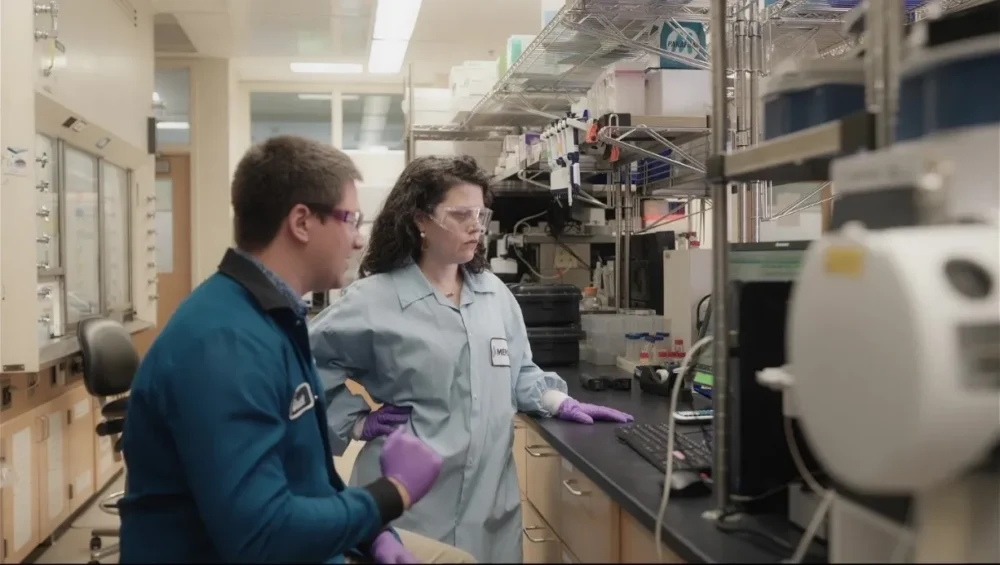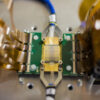The global cancer diagnostics market is on a steep growth trajectory, projected to expand from USD$184.37 billion in 2024 to USD$345.57 billion by 2033.
A new report issued on Tuesday from market research firm, Renub Research, indicates that this 7.23 per cent CAGR is driven by rising cancer incidence, rapid technological innovation, greater public awareness of early detection, and the demand for more personalized and precise treatment options.
Healthcare systems and governments are investing heavily in infrastructure and programs that improve access to cutting-edge diagnostic tools, particularly those capable of detecting cancers at the earliest stages.
Cancer diagnostics encompass a wide range of tests and technologies used to detect cancer, determine its stage, and guide treatment. Imaging techniques such as CT scans, MRIs, PET scans, and X-rays remain foundational.
Biopsy methods continue to provide definitive diagnoses through tissue analysis, while blood tests identify biomarkers linked to specific cancers. Early and accurate diagnosis allows physicians to tailor treatment plans to individual patients, improving survival rates and treatment effectiveness.
Regular monitoring through diagnostic tests helps evaluate the success of treatment and detect recurrences promptly.
Technological trends are reshaping the sector.
Liquid biopsies, for example, offer a non-invasive alternative to traditional tissue biopsies by detecting circulating tumour DNA and other markers through a simple blood test. These tests minimize discomfort, speed up diagnosis, and enable more personalized treatment. In June 2025, the Florida Cancer Specialists & Research Institute began offering advanced genomic liquid biopsies to improve detection and monitoring. As these tests become more accurate and sensitive, adoption is spreading across healthcare systems worldwide.
Read more: Breath Diagnostics gives the public the chance to join the fight against cancer
Read more: Breath Diagnostics leader speaks at lung cancer education event in Louisville
Artificial intelligence helps make great strides
Artificial intelligence is also transforming cancer diagnostics. AI-powered systems analyze images, identify patterns, and make predictive assessments with greater speed and accuracy than human analysis alone.
These systems can detect subtle signs of cancer that might otherwise be overlooked, reducing human error and accelerating decision-making. In September 2024, Roche expanded its open digital pathology platform to integrate more than 20 AI algorithms from new partners. This also boosted diagnostic capabilities.
Furthermore, the combination of AI with large-scale medical datasets is enabling more personalized, data-driven cancer care.
Artificial intelligence is also transforming cancer diagnostics.
AI-powered systems analyze images, identify patterns, and make predictive assessments with greater speed and accuracy than human analysis alone. These systems can detect subtle signs of cancer that might otherwise be overlooked, reducing human error and accelerating decision-making.
In September 2024, pharma-giant Roche (OTCMKTS: RHHBY) expanded its open digital pathology platform to integrate more than 20 AI algorithms from new partners, boosting diagnostic capabilities.
Kentucky-based Breath Diagnostics is also leveraging AI to enhance its breath-based cancer detection technology, using machine learning to analyze volatile organic compounds for faster, non-invasive diagnosis. Furthermore, the combination of AI with large-scale medical datasets is enabling more personalized, data-driven cancer care.
Furthermore, the report indicated point-of-care (POC) cancer testing as another rapidly growing area.
Portable, easy-to-use devices deliver fast results without requiring a full laboratory, making them invaluable in remote or underserved regions. Advances in sensitivity and specificity are improving the performance of these compact diagnostic kits. Additionally, healthcare systems are incorporating POC testing into screening programs to expand reach, lower costs, and improve early detection rates.
Read more: Breath Diagnostics onboards new president and closes critical financing
Read more: Breath Diagnostics takes aim at lung cancer with One Breath
Rising global incidence of cancer is primary market driver
Another breakthrough trend is the rise of multi-cancer early detection (MCED) tests.
These tests can identify multiple types of cancer from a single blood draw, often using genomic and proteomic biomarkers. They hold particular promise for cancers lacking established early screening methods, such as pancreatic and ovarian cancer.
Improved next-generation sequencing and bioinformatics are making MCED tests more accurate and affordable. Consequently, interest from research institutions, diagnostic firms, and healthcare providers is accelerating commercialization and adoption.
The primary driver behind the market’s growth is the rising global incidence of cancer.
Aging populations, lifestyle shifts, and environmental exposures are all contributing factors. In 2022 alone, an estimated 20 million new cancer cases and 9.7 million deaths occurred worldwide.
Approximately one in five people will develop cancer in their lifetime, making early detection essential. Governments and providers are responding by expanding diagnostic services, creating a sustained market growth opportunity.
Advances in genomics and molecular diagnostics are further fueling expansion. Technologies such as next-generation sequencing, polymerase chain reaction, and fluorescence in situ hybridization enable precise identification of genetic mutations and cancer biomarkers. These capabilities make personalized treatment plans possible and improve patient outcomes. As costs fall, adoption of these tools in hospitals, research labs, and oncology centres is accelerating.
Government initiatives and public health programs also play a pivotal role. Subsidized screenings, mobile diagnostic units, and national campaigns are increasing access for high-risk populations. For example, in 2024, the European Commission proposed new recommendations to boost vaccination coverage for HPV and HBV, both of which are linked to certain cancers. Such policies, combined with research funding and reimbursement incentives, encourage innovation and expand diagnostic availability.
.
joseph@mugglehead.com













